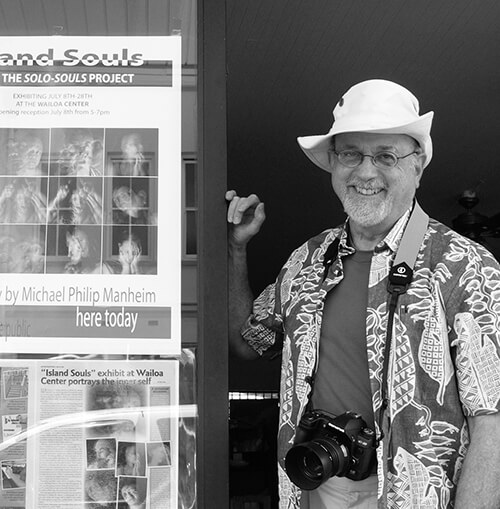Michael Philip Manheim, born in the U.S. in 1940, is widely recognized both for his documentary and for his innovative multiple exposure photographs. Both categories encompass images that promote feelings. Most celebrate human emotion as a primal link that unifies all of humankind.
Michael Philip Manheim's photography has been exhibited throughout the United States and internationally, in over 20 solo exhibitions and 30 group shows. His work has been featured extensively online, as well as in hundreds of books and magazines such as Zoom (U.S. and Italy), Photographers International (Taiwan), La Fotografia (Spain), and Black and White Magazine (U.S.).
Manheim's photographs are held in private as well as public collections including the Library of Congress, the International Photography Hall of Fame, the National Archives, the Danforth Museum of Art, and the Bates College Museum of Art.
About How Once We Looked
"The world I experienced, as the 1940s slid into the 1950s and beyond
I'm delighted to share this sampling of my photography. When I created the snapshot of Little Sister, my four year old sister, I had no idea that I would be pursuing photography as an avocation, let alone a profession. Our mother did her best to expose my sister and me to the arts, even enrolling me in classes with adults at a local art center. As a youngster, I knew I wasn't good enough at painting.
But I did have a sense of a composition. And I did have a science teacher at State Street Junior High School, Miss Ayers, who had set up a small darkroom and invited me to use it. Bingo! Shazam! Whatever you say, when the light literally turns on.
I became enamored of photography. I was living in a Rust Belt town in Ohio where I didn't belong, in the 1950s. And what to do when you don't fit local norms? Entering my teen years, I hid behind a camera. My swords and shields as I moved on to high school began with the Speed Graphics assigned in photography class. It was unusual to have a high school photography course in that era, and I blossomed in that narrow sphere. I became a local treasure, winning in contests but with a whole lot to learn and a vital need to grow myself up.
It took grit, I now realize, to escape the confines of a family business and the confines of the values of my community. But I didn't know that then. All I knew was that I had a passion that I must explore. Working strenuously to catch up, after college, I created a profession for myself. Today I look back with perspective and wonder.
I see that I had a fascination with movement, as well as with light. I see that I developed reflexively and intuitively, in capturing the essence of a moment. I see that the innate compositional sense expanded into a style. And so on, all insights offering me a chance to pause and reflect as I go forward.
My circuitous route through a long career in professional photography has swung back to my roots. Curators and collectors now appreciate photojournalism as fine art. So do the bloggers who are displaying my images.
There's a message there! Hence into the archives I've plunged to see now what I saw long ago. I'm digitizing a series of nostalgic images that are going into my own blog and into a series of monographs.
I'm creating a book series called How Once We Were, starting with an update of this earlier presentation of my nostalgic photography." -- Michael Philip Manheim
Selected Books on

